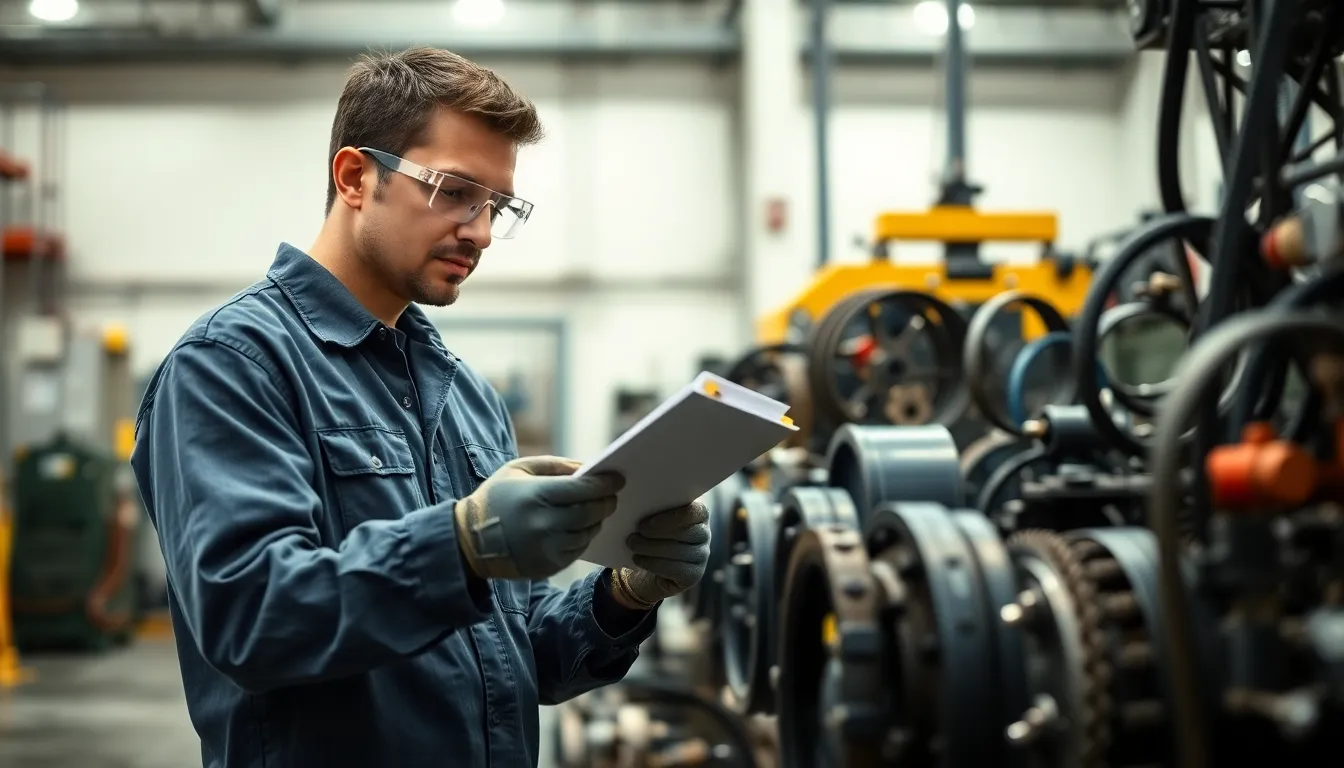In the world of machinery and equipment, a little prevention goes a long way. Imagine your car breaking down right before a road trip—talk about a mood killer! Preventative maintenance checklists are the unsung heroes that keep everything running smoothly, saving time and money while avoiding those oh-no moments.
Table of Contents
ToggleImportance Of Preventative Maintenance Checklists
Preventative maintenance checklists play a crucial role in ensuring equipment longevity and optimal performance. These tools help systematically identify and address potential issues before they escalate.
Benefits Of Regular Maintenance
Regular maintenance offers numerous advantages. Improved reliability ensures machines operate without interruptions. Regular inspections lead to enhanced safety conditions, reducing the risk of accidents. Increased efficiency results from well-maintained equipment, which often operates at peak performance. Preventative checklists also empower teams to adhere to regulatory guidelines, ensuring compliance and reducing liabilities. With clear schedules outlined, employees find it easier to manage their tasks.
Cost Savings And Efficiency
Cost savings manifest significantly through preventative maintenance practices. Avoiding unexpected repairs can save organizations thousands of dollars annually. Regular inspections often reveal minor problems that can be fixed at a lower cost compared to major repairs. Increased efficiency means lower energy bills, as equipment in good condition operates more effectively. Using checklists helps standardize processes, minimizing downtime and maximizing productivity. Facilities can allocate resources better, ensuring that maintenance budgets stretch further.
Components Of A Preventative Maintenance Checklist

Preventative maintenance checklists consist of essential components that ensure effective management of equipment and tools. Focusing on these components reinforces system reliability and performance.
Equipment Inspection
Equipment inspections include thorough evaluations of machinery functionality and safety. Checklists typically feature specific items, such as checking for wear and tear on belts, filters, and hoses. Regular assessments help identify potential issues early and facilitate immediate repairs. Incorporating a systematic inspection process within the checklist promotes equipment longevity and minimizes unexpected breakdowns. Technicians can use standardized criteria to evaluate equipment, ensuring no critical areas of concern are overlooked. Preventative inspections create a culture of proactive management, further enhancing operational efficiency.
Lubrication Requirements
Lubrication requirements form a critical part of any maintenance checklist. Various machinery components require specific types of lubricants to operate optimally. Each checklist should outline lubrication intervals based on manufacturer specifications. Regular lubrication reduces friction, decreases wear, and extends equipment lifespan. Following designated lubrication procedures minimizes the risk of severe damage and costly repairs. Technicians benefit from keeping accurate records of lubrication activities, aiding in accountability and ongoing maintenance tracking. Additionally, using checklists ensures that no components remain neglected and promotes the smooth functioning of machines.
Safety Checks
Safety checks are vital components of preventative maintenance checklists. These checks encompass ensuring that safety guards, emergency stops, and warning signs function properly. Each checklist should specify necessary inspections, emphasizing compliance with safety regulations. Regular safety assessments help mitigate risks, protect employees, and prevent workplace accidents. Incorporating emergency response procedures within the checklist enhances preparedness for potential incidents. Proper documentation of safety checks enables organizations to demonstrate adherence to safety standards during audits. Providing a systematic approach to safety fosters a culture of responsibility and promotes a safe working environment.
Best Practices For Creating Effective Checklists
Creating effective checklists requires attention to detail and a structured approach. Organizations can optimize their maintenance processes by following best practices.
Tailoring Checklists To Specific Equipment
Tailoring checklists ensures relevance and effectiveness. Each piece of equipment has unique characteristics and maintenance needs. For instance, machinery used in manufacturing may require different inspections than those in agricultural settings. Specificity in checklists enhances efficiency by focusing on critical components. Customizing these tools fosters targeted inspections and allows maintenance personnel to swiftly identify potential issues. Additionally, incorporating manufacturer recommendations helps maintain compliance with warranty standards. Regularly updating checklists based on equipment performance further enhances their effectiveness.
Frequency Of Maintenance Checks
Determining the optimal frequency of maintenance checks ensures reliability. High-use equipment often requires more frequent evaluations than less utilized machines. Organizations typically develop schedules based on hours of operation or manufacturer guidelines. Weekly checks may suffice for critical machinery, while monthly inspections may work for others. Monitoring equipment performance between scheduled checks helps identify emerging issues. Maintenance schedules must adapt to equipment age and operating conditions. Regularly reviewing and adjusting these timelines fosters proactive management and minimizes unexpected breakdowns.
Implementing Preventative Maintenance Checklists
Effective implementation of preventative maintenance checklists significantly enhances operational efficiency and safety in organizations. Focused attention on training staff and regularly monitoring checklists leads to superior outcomes.
Training Staff On Usage
Training staff on the usage of preventative maintenance checklists ensures everyone understands their importance. Educating team members about specific tasks promotes accountability and thorough inspections. Workshops or training sessions can clarify procedures, expectations, and outcomes. Providing hands-on demonstrations showcases practical applications and fosters engagement. Regular refresher courses keep skills sharp and reinforce the checklist’s relevance to daily operations. Empowering staff to identify potential issues using the checklist enhances proactive management. As employees become familiar with these tools, they’ll feel more confident addressing maintenance tasks and reporting concerns.
Monitoring And Adjusting Checklists
Monitoring and adjusting checklists are crucial for maintaining effectiveness over time. Frequent reviews highlight areas for improvement and facilitate necessary updates. Observing how checklists perform in real-world situations provides valuable insights into their usefulness. Ensuring checklists align with current equipment needs and best practices keeps maintenance relevant. Regular feedback sessions with staff help identify any challenges encountered during implementation. Adapting checklists based on performance data can boost productivity and reduce unexpected breakdowns. Prioritizing updates based on changing equipment conditions cultivates a responsive maintenance strategy.
Preventative maintenance checklists are essential tools for any organization aiming to enhance operational efficiency and safety. By systematically addressing potential issues before they escalate, these checklists not only promote equipment longevity but also foster a proactive management culture.
Organizations that prioritize these practices stand to benefit from significant cost savings and improved reliability. Training staff on the effective use of checklists ensures accountability and thorough inspections, further maximizing productivity.
Regularly reviewing and updating checklists based on equipment performance keeps maintenance strategies aligned with current needs. Ultimately, embracing preventative maintenance checklists is a strategic investment in the future of any facility.



